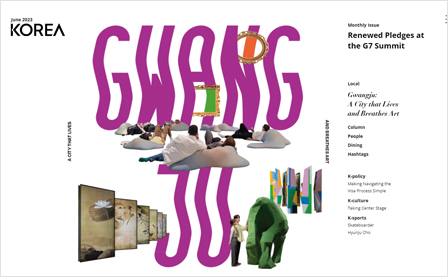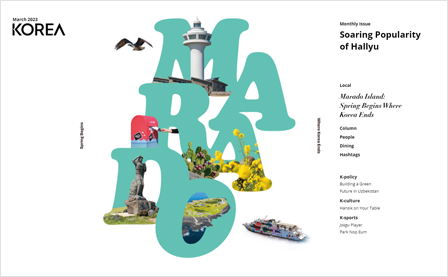July 2023

Local
Dining
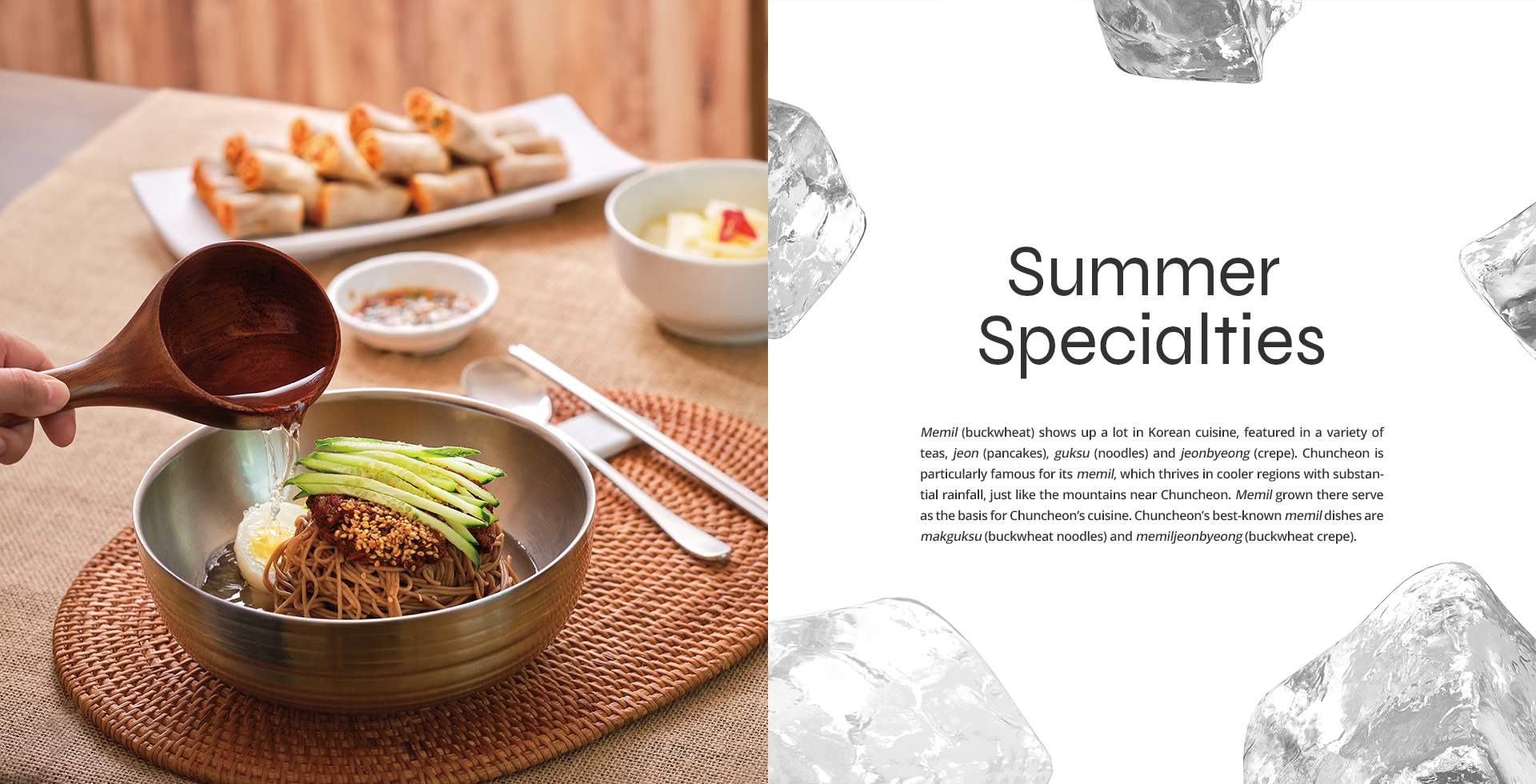

Two Dishes on One Plate
The name makguksu combines mak, meaning “right away,” and guksu, meaning “noodles.” The idea was that this memil dish could be thrown together “right away” whenever you got the craving for it. One feature of the dish is that it’s typically prepared with whatever ingredients are found at home, so both the sauces and the garnishes are up to the cook. For those reasons, the flavor of makguksu can vary from restaurant to restaurant.
The noodles are the first step in making makguksu. Memil batter is placed into a machine that presses out the noodles. Makguksu start to clump together if you leave them sitting around too long, so they’re not made until the order comes in. The fresh noodles are slathered with red paste and topped with various garnishes, including cucumbers, hard-boiled eggs, cuts of meat and sesame seeds.
Next, it’s time to mix up the makguksu. Give the dish a vigorous stirring until the red paste is blended with the noodles and garnishes. You’ll find vinegar, sugar and soy sauce on the table, so add sauces as desired. Go ahead, take a bite! The cucumber adds a crunch to the soft noodles and the sesame seeds make the dish even richer.
In Chuncheon, diners get to experience two ways of eating makguksu with every meal. At the beginning of the meal, they eat makguksu mixed up with the paste, and in the middle of the meal, they pour in the dongchimi (radish water kimchi) that’s served on the side. In other parts of Korea, bibim (mixed) makguksu and mul (watery) makguksu are sold separately, but Chuncheon restaurants don’t make that distinction. In effect, you get two dishes on one plate. Pouring the dongchimi broth onto the makguksu makes it even more zesty and refreshing.
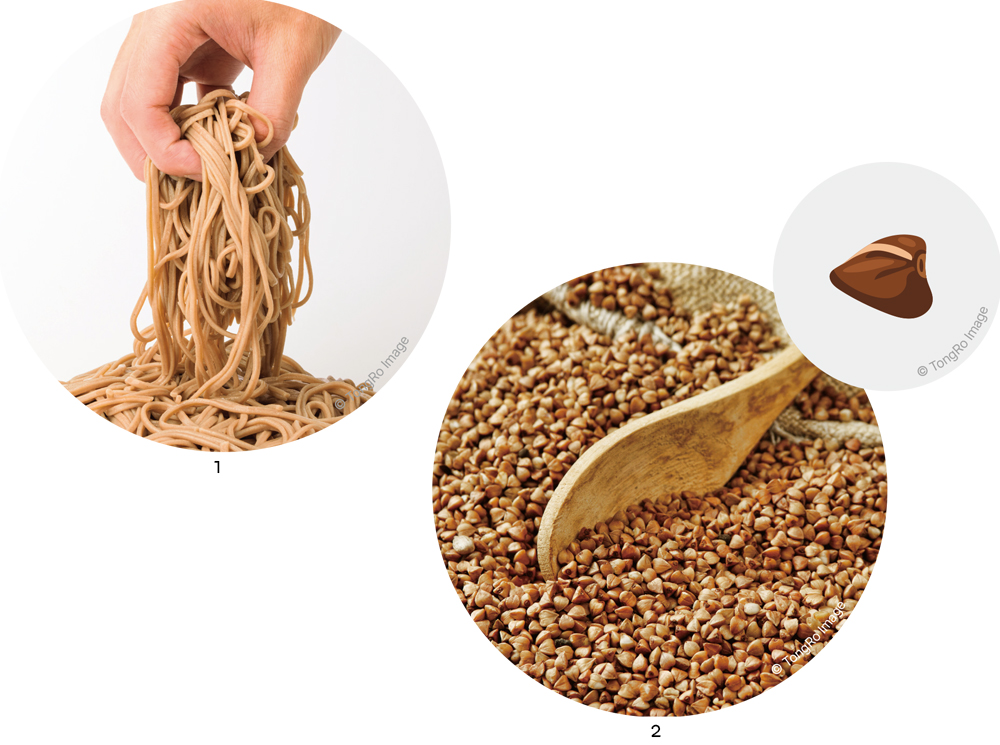
1. Makguksu is characterized by grinding both the kernels and the hulls together, resulting in a brown color.
2. Memil has a high nutritional value because it’s rich in protein.
Banquet Hiding in the Memil
On the outside, a memiljeonbyeong might look a little like a burrito. But on the inside, the story is completely different. These crepes are stuffed with a range of ingredients, including dangmyeon (glass noodles), gatkimchi (leaf mustard kimchi), baechukimchi (napa cabbage kimchi), radishes, pork and squid.
Memil is ground up and mixed into a batter and then spread out, thin and wide, on a heated griddle, rather like crepe. Then the filling is placed on top and the crepes rolled up. Voila, you have memiljeonbyeong! If you visit a traditional market, keep a look out for vendors who prepare memiljeonbyeong in the traditional way. It can be fascinating to see how they make their crepes.
While the memiljeonbyeong are still hot off the stove, dip one in soy sauce and take a bite. Expect an explosion of flavors as you tear through the memil skin to get to the various fillings: kimchi, meat, dangmyeon and more. The uniquely chewy texture of the memil skin enhances the mouthfeel of the dish. These crepes can be a bit spicy, so you may want to wash them down with a cup of makgeolli (unrefined rice wine).
Memil is a fantastic food, rich in both flavor and nutrients. It’s full of fiber, which keeps things moving through the intestines, along with Rutin, which is beneficial for hypertension and diseases of old age. Memil also helps cool you down, making it the perfect health food for the muggy summer months. This summer, how about heading over to Chuncheon to check out the local memil dishes? These variations on a culinary theme will make your trip a blast.
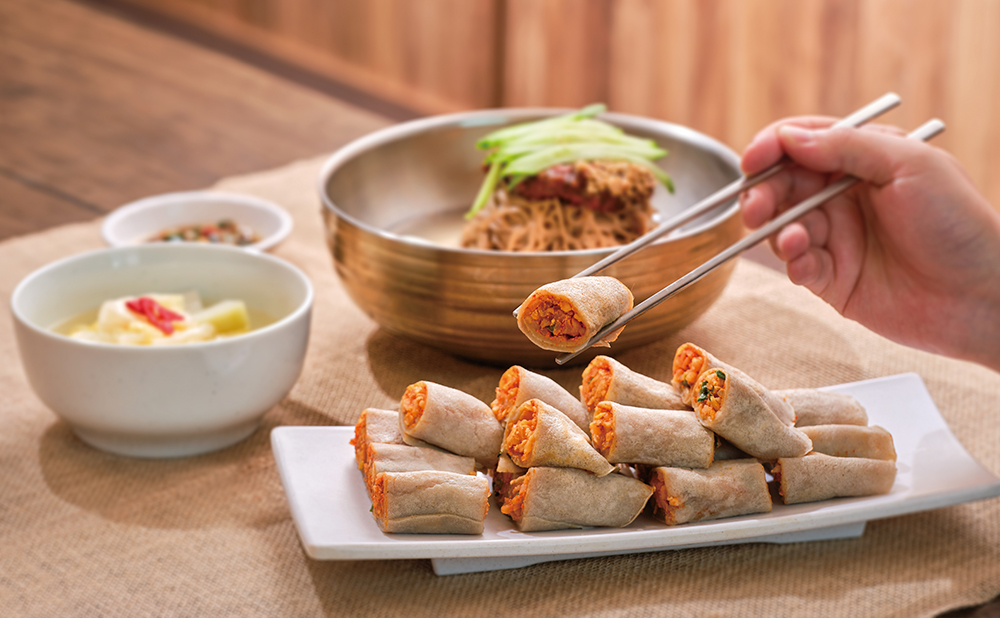
Memiljeonbyeong is considered a representative food of Chuncheon.
 View of all
View of all